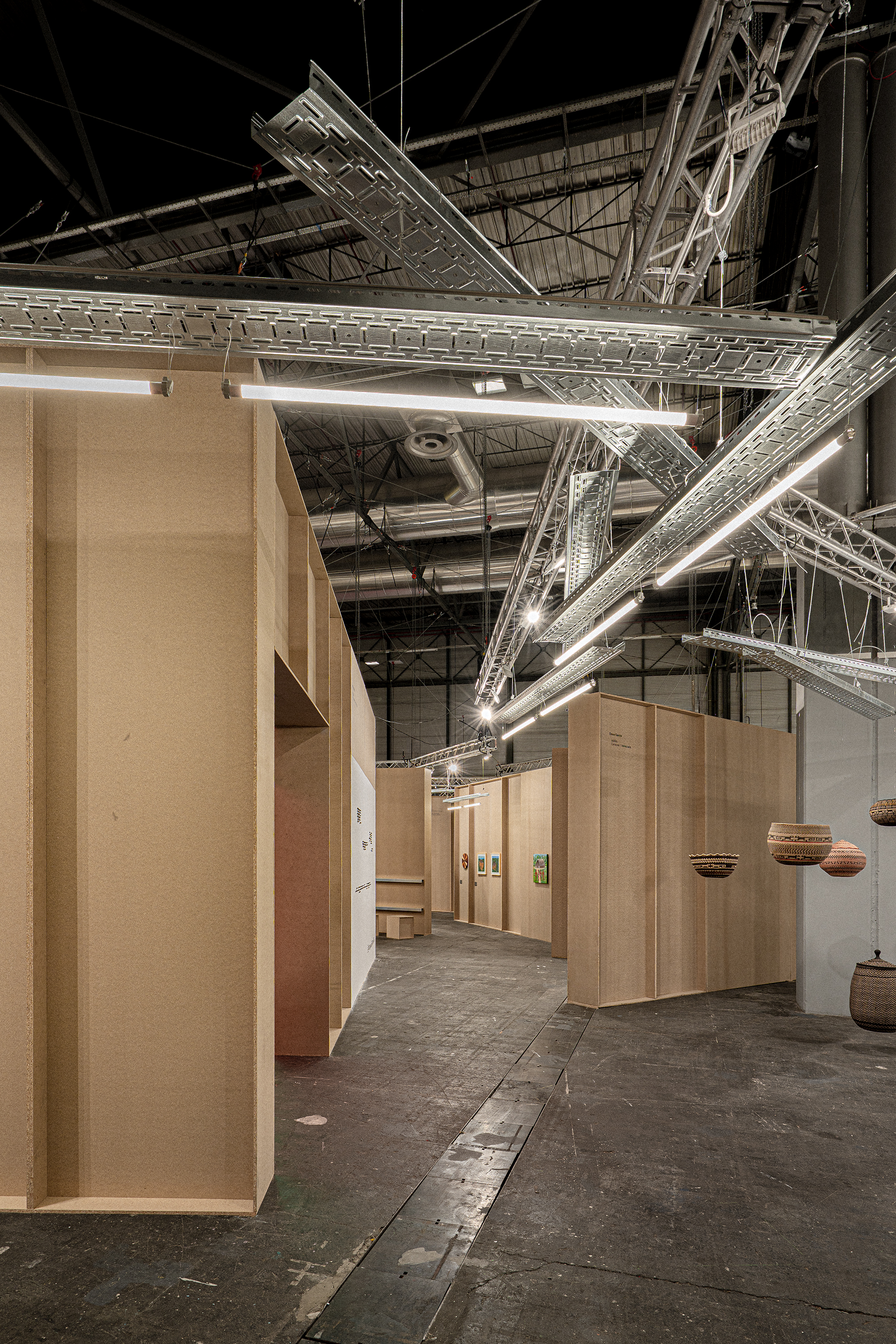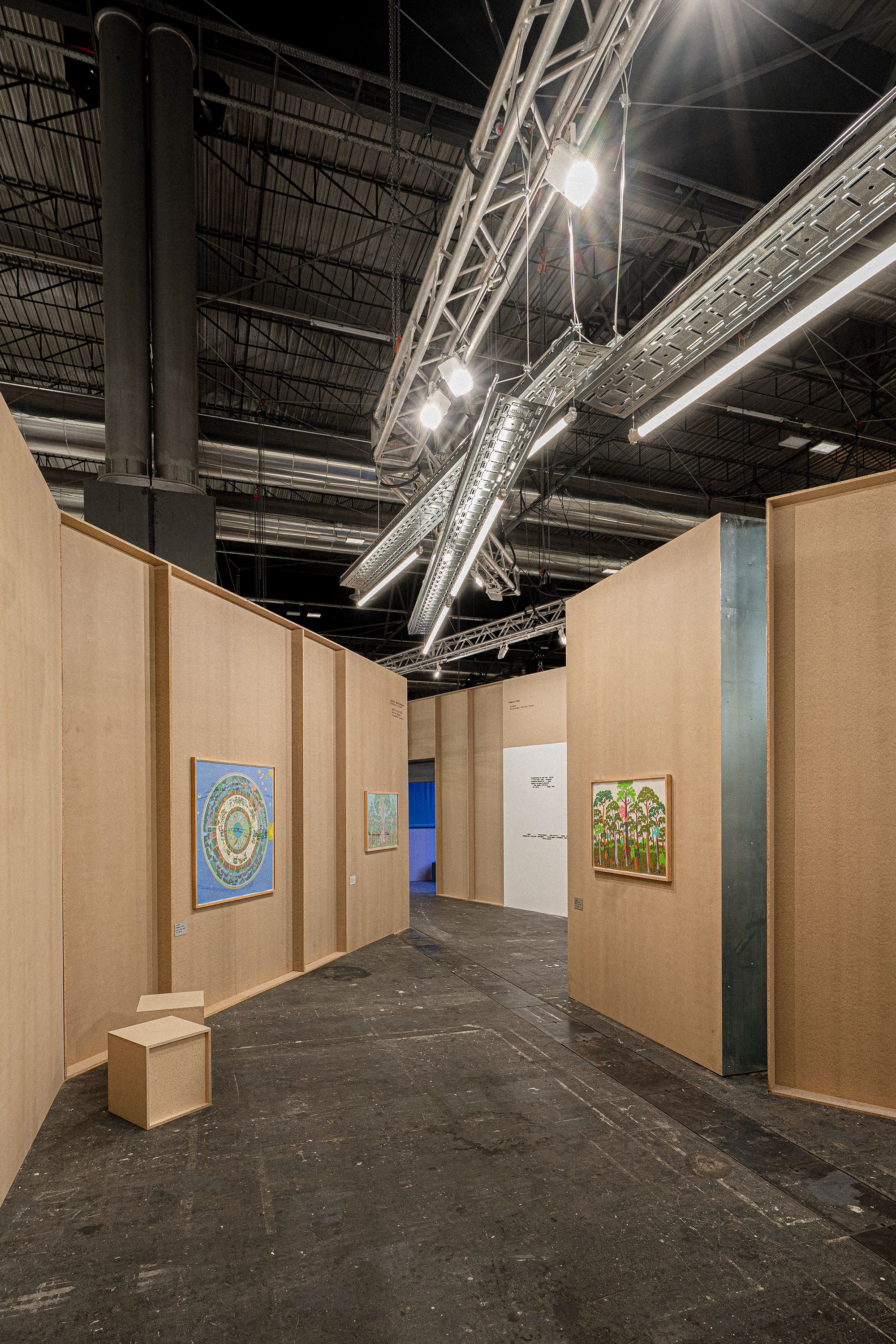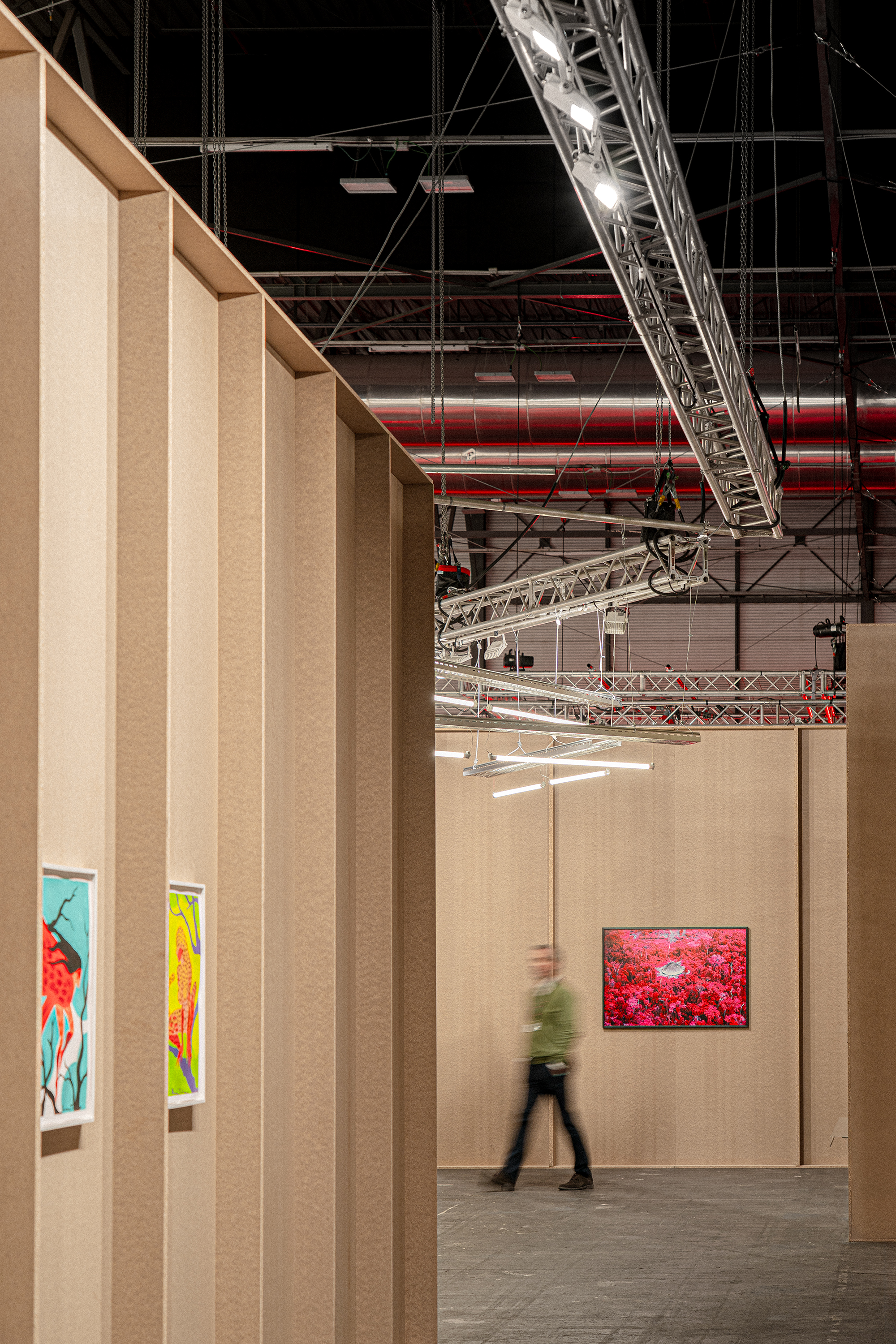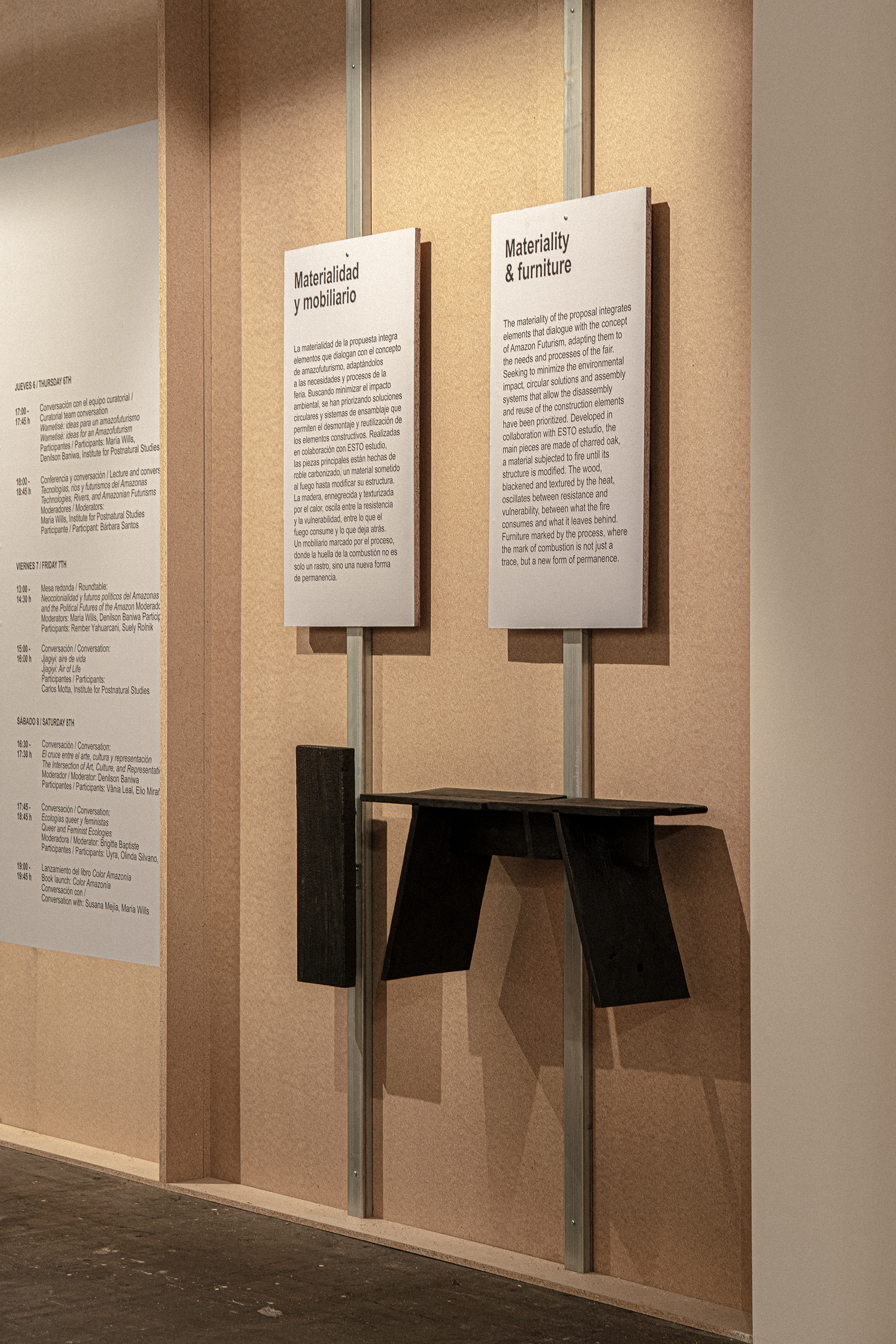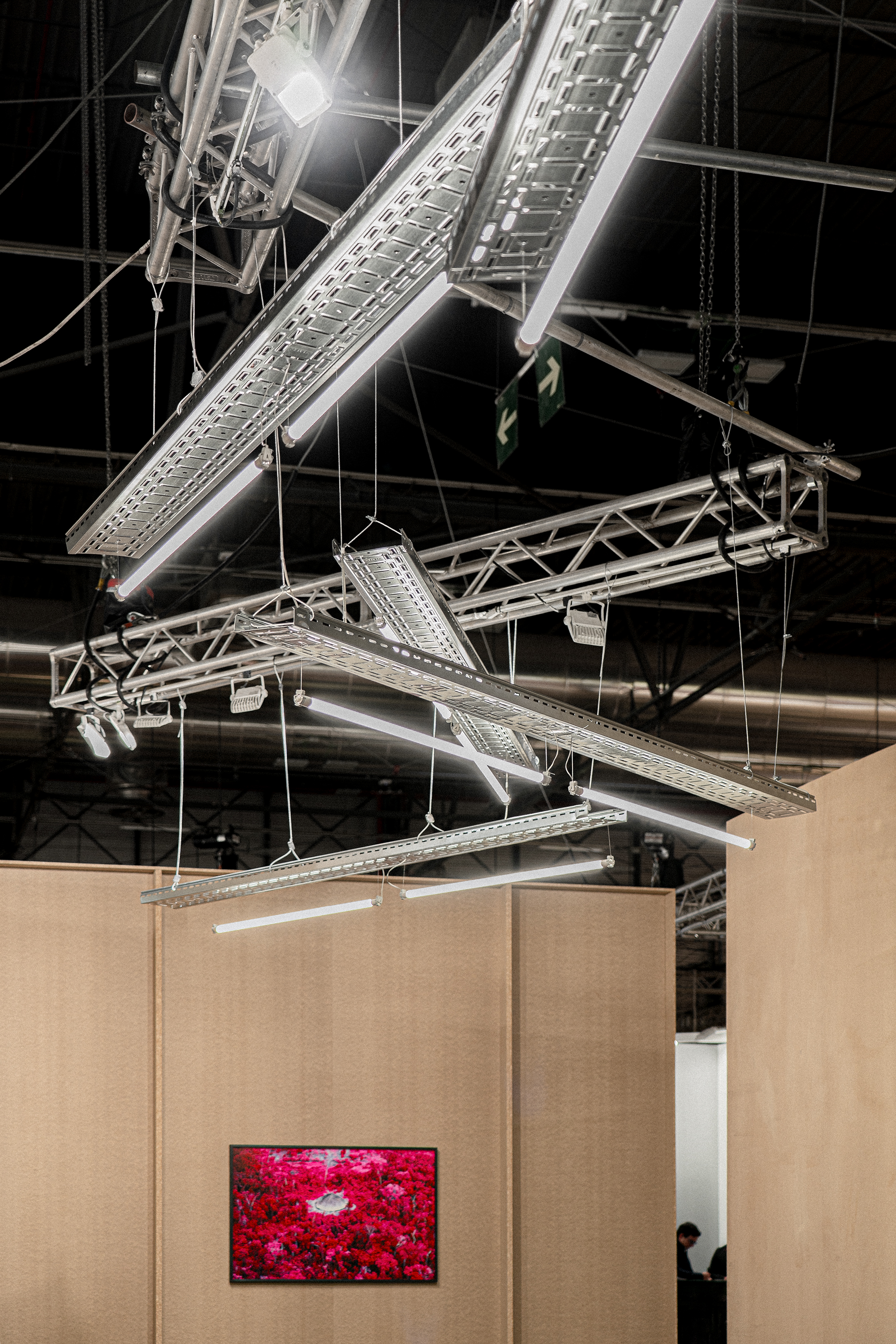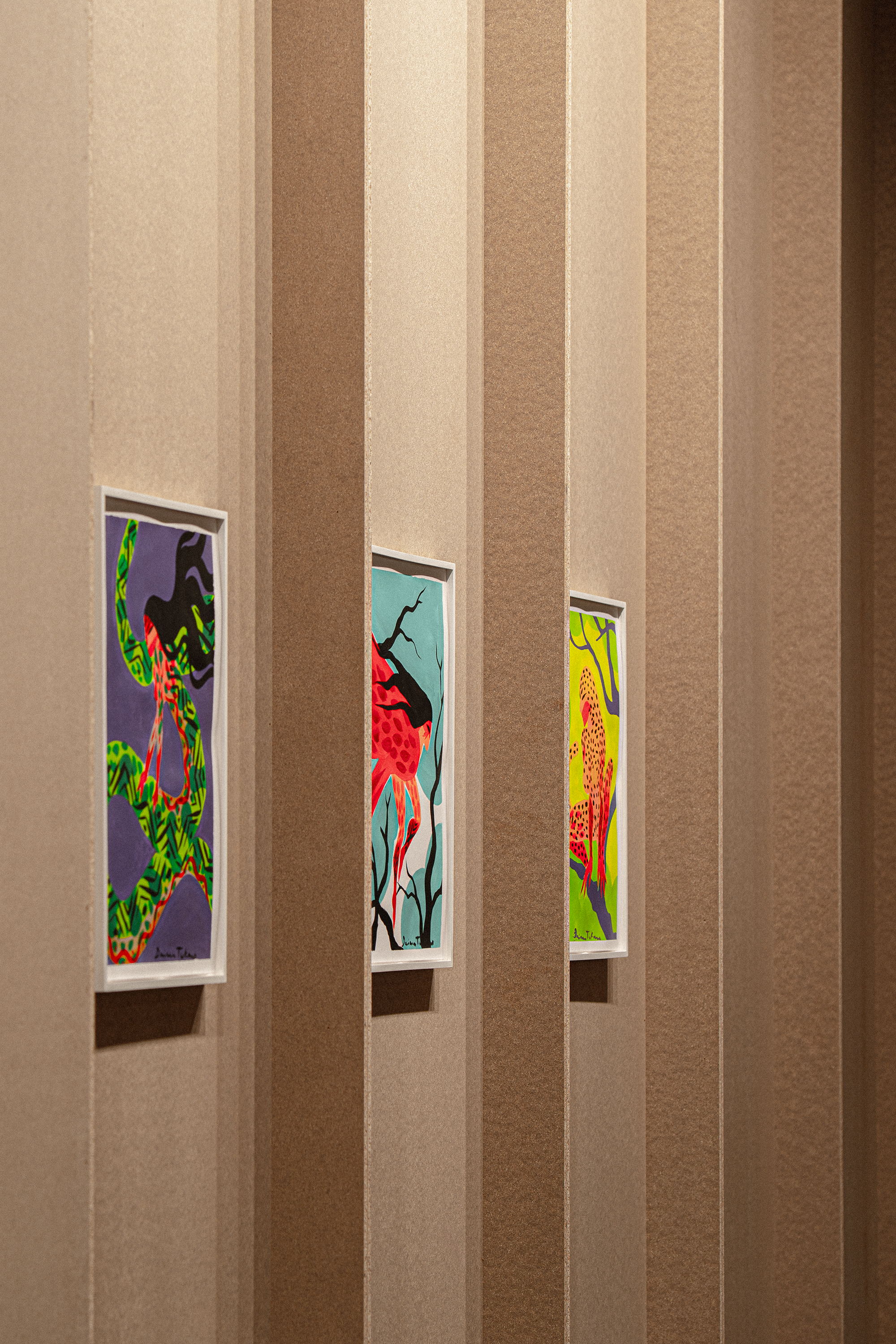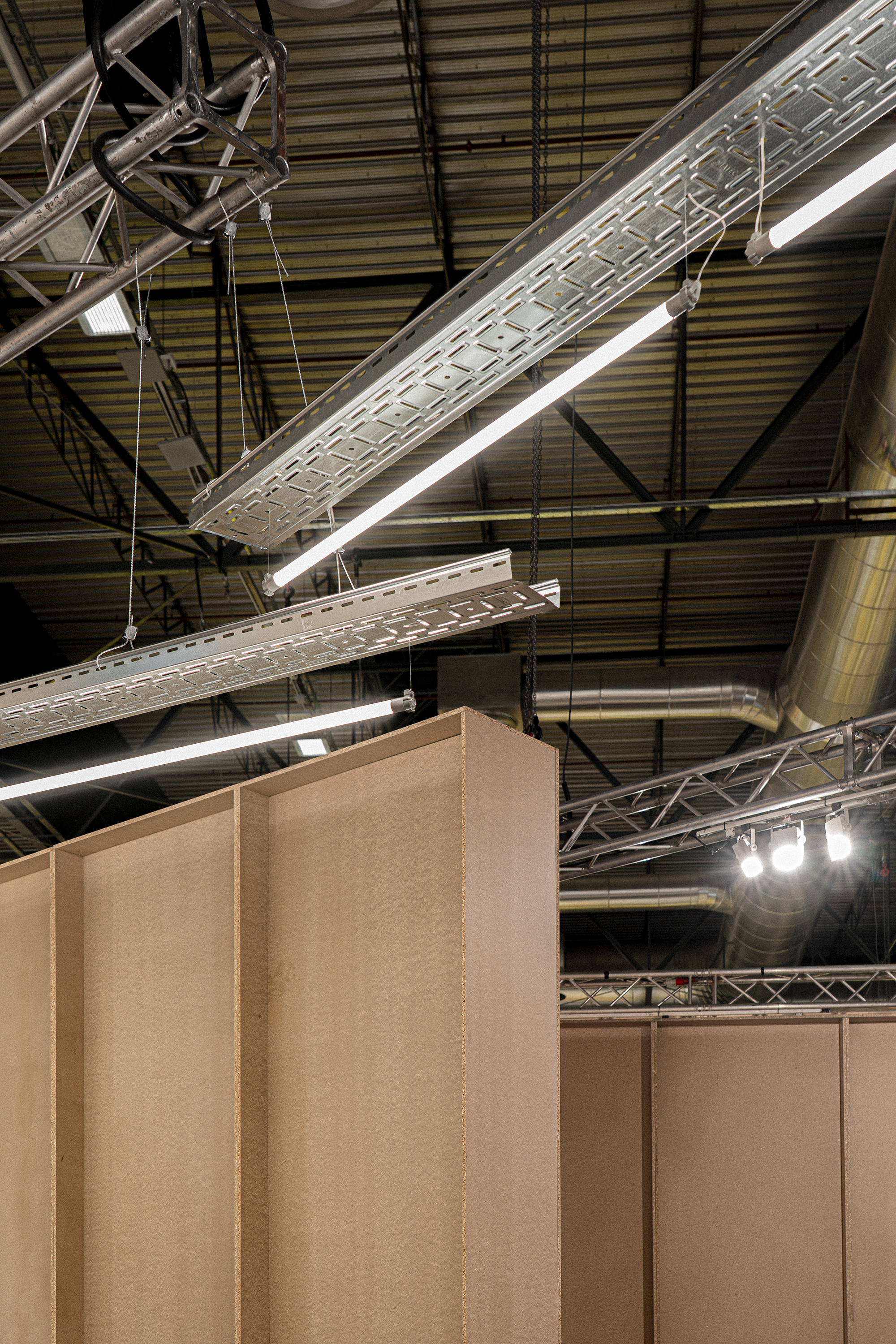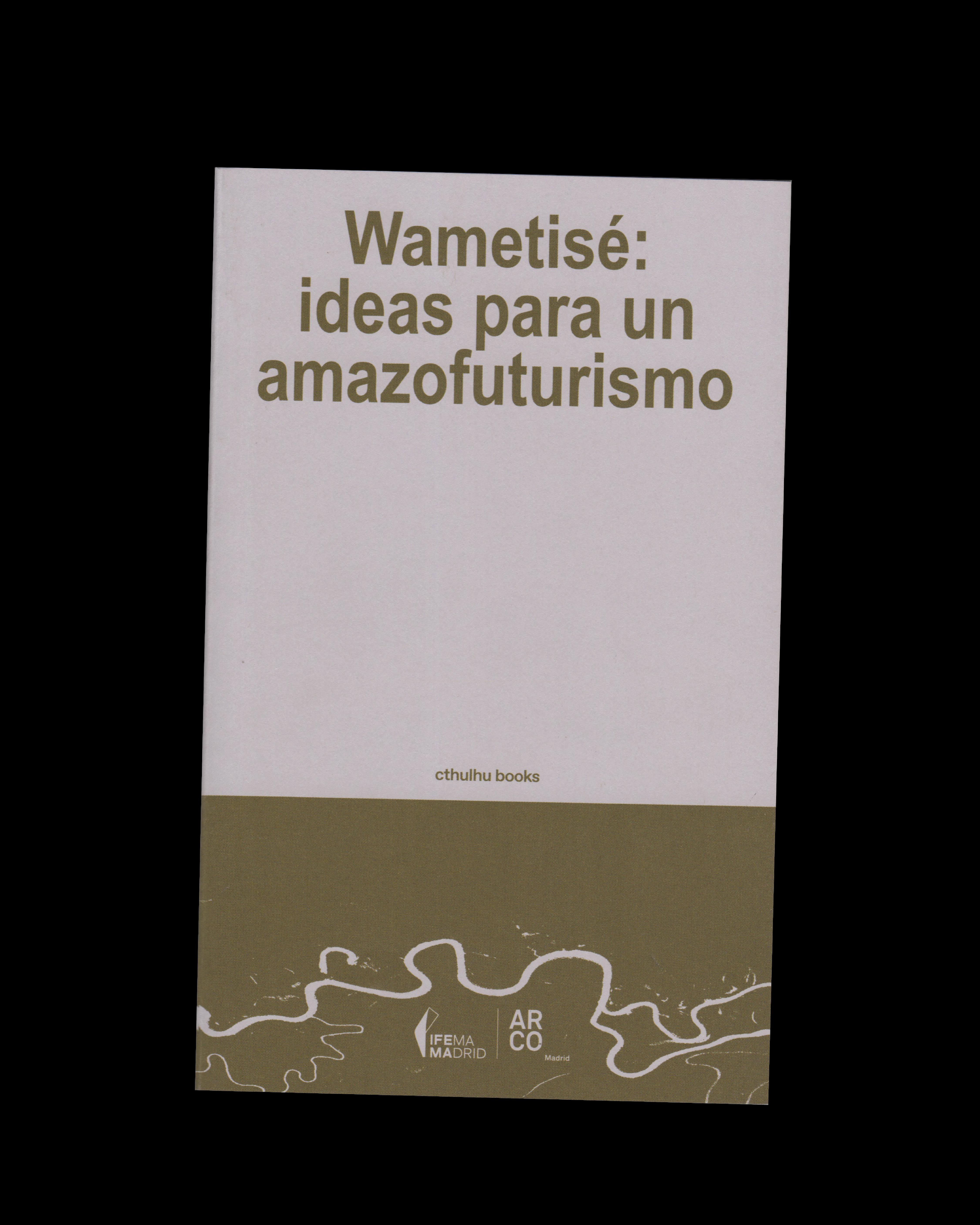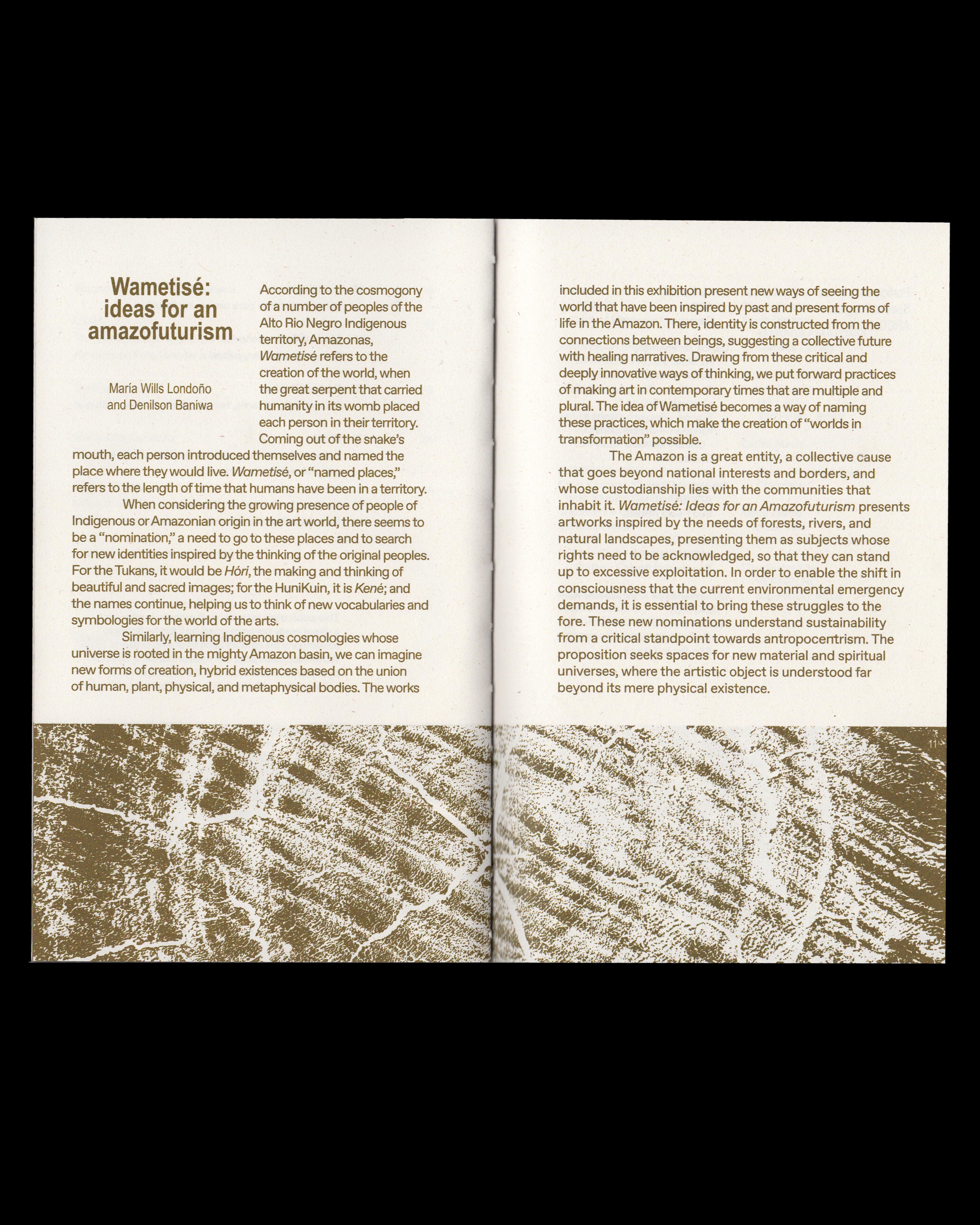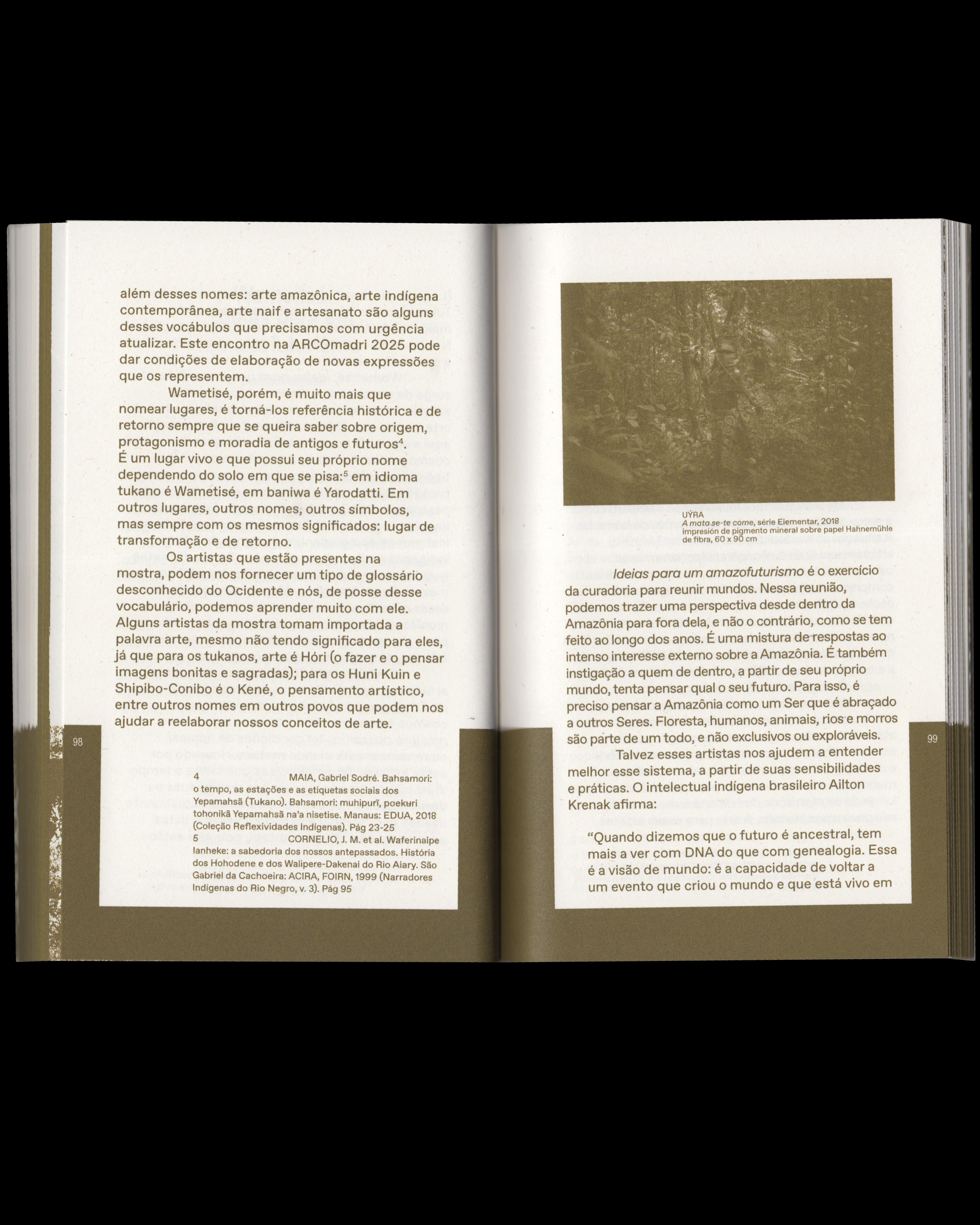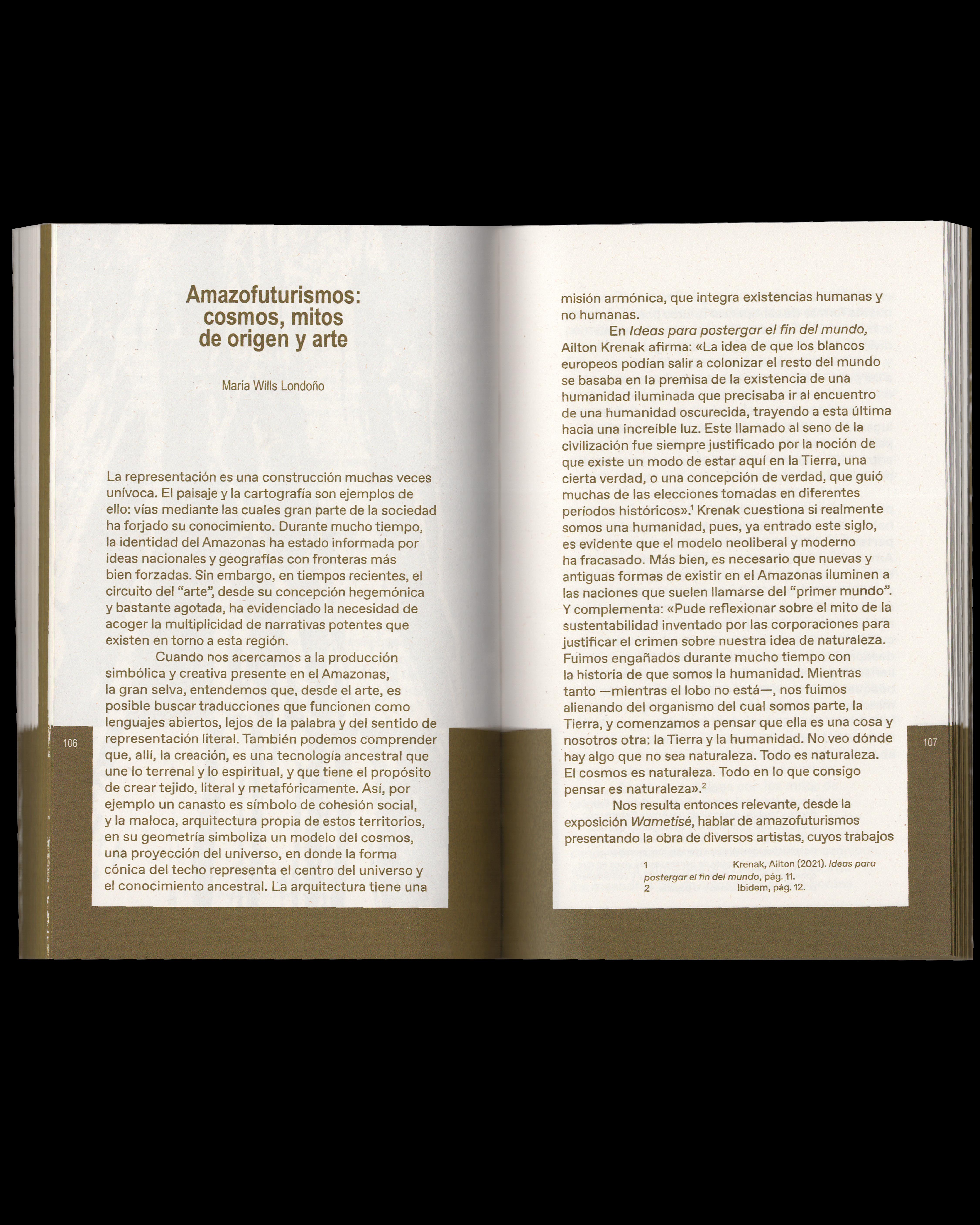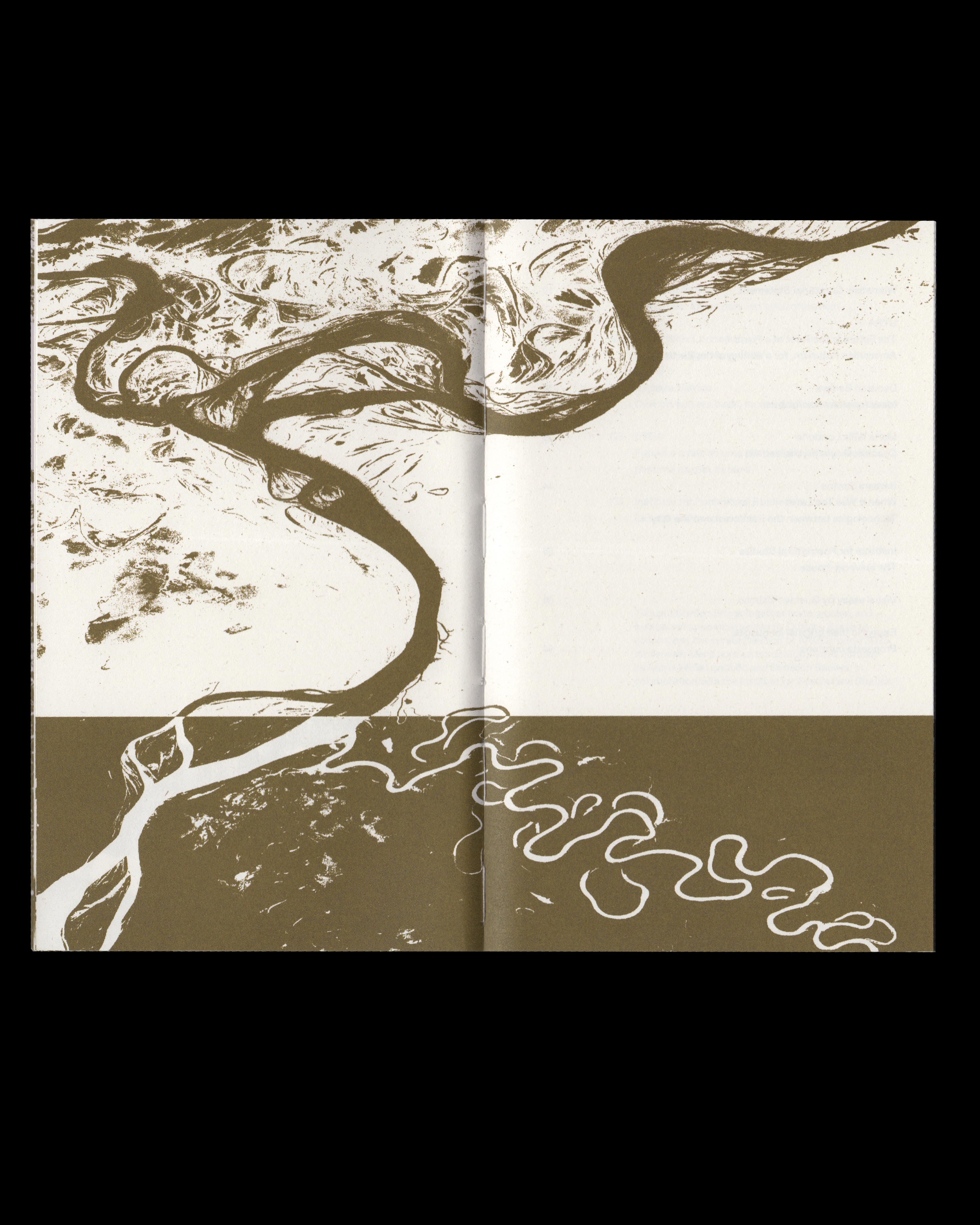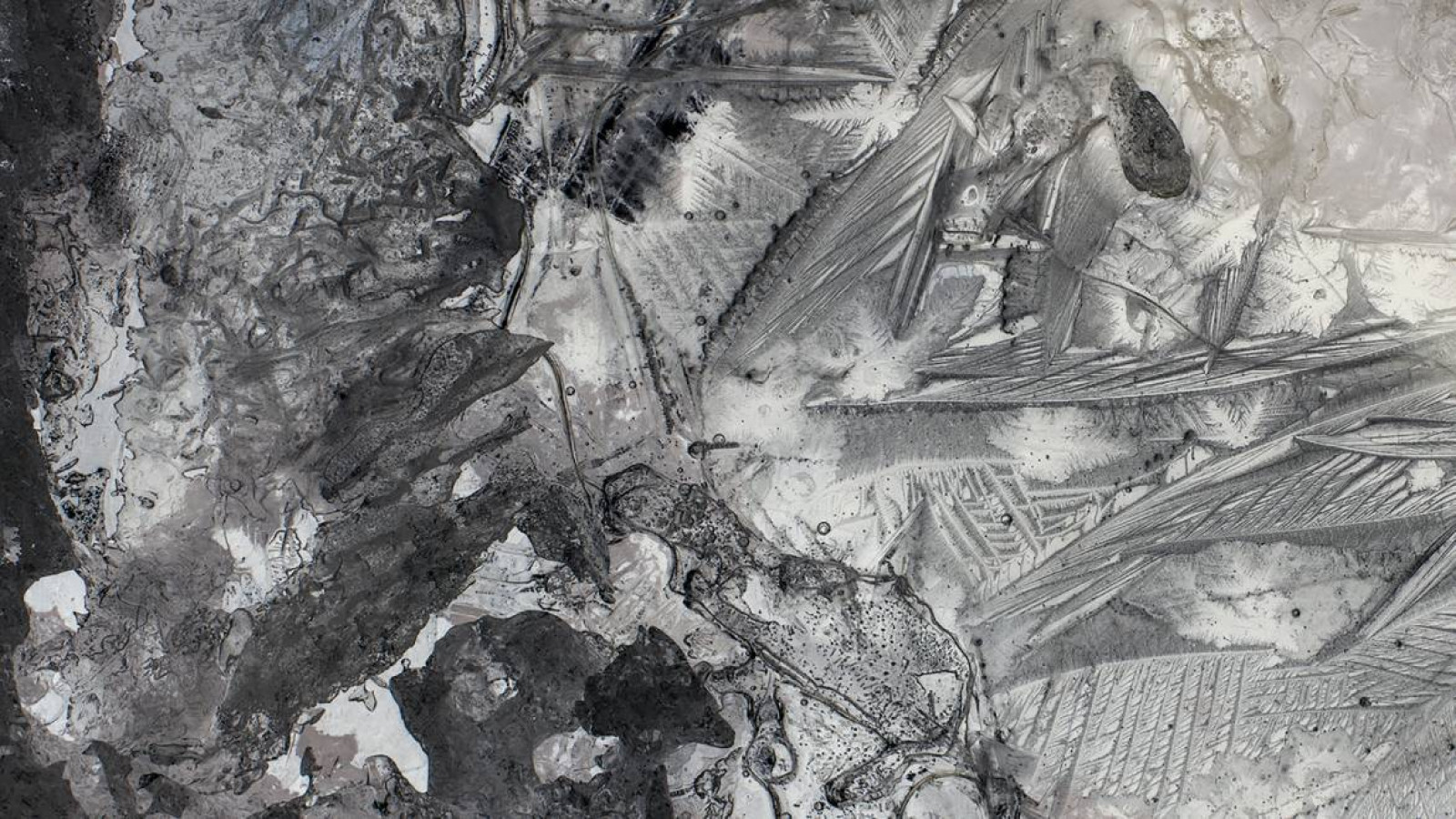Wametisé: Ideas for an Amazofuturism—ARCO 2025


General Info
- Location
-
Madrid, Spain
- Commissioned by
-
ARCOmadrid
- Date
-
05/03/2025 – 09/03/2025
- Typology
-
Exhibition / Public Program / Publication
- Curated by
-
Maria Wills and Denilson Baniwa in collaboration with IPS
About
The exhibition invited audiences to explore the complex entanglements between Amazonian cosmologies, ancestral knowledge systems, and speculative technological futures. Inspired by the symbolic flows of rivers and the figure of the serpent as a temporal and territorial guide, the spatial design articulated a circular, spiral-like journey that gradually led visitors toward a central core. This nucleus — conceived as a technological heart — served as the site for the exhibition’s public program, envisioned as an open platform for dialogue between diverse worldviews, ecologies, and cultural perspectives. The accompanying publication extended the project’s conceptual landscape through contributions in poetry, visual essays, and critical writing. With an emphasis on sustainable materials and circular design principles, the project embodied alternative modes of making and caring — both materially and ideologically — aligned with the ethical and ecological imperatives of amazofuturist thinking.
Architecture
The architectural proposal was deeply inspired by the cosmogonies of the Upper Rio Negro, particularly the concept of Wametisé — a term referring to the creation of the world and the allocation of territory to humanity by a great serpent. Translated as “named places,” Wametisé served as the conceptual anchor for the spatial narrative, symbolizing the interconnection between time, land, and the cultures that inhabit it.
The spatial design evoked the form of a coiled serpent, generating a spiral path through the pavilion. This circular movement not only referenced the serpent as a guide, but also embodied the cyclical temporality and interconnectivity inherent in Amazonian cosmologies. As visitors moved through the space, they undertook a dynamic journey toward a central nucleus — the symbolic heart of the project. This space concentrated both the symbolic energy and the public activity of the exhibition, acting as a meeting point for collective reflection and exchange.
The material approach was aligned with amazofuturist principles, seeking to minimize environmental impact through the use of circular systems and modular structures designed for disassembly and reuse. The architecture of Wametisé offered an immersive experience that transcended visual perception, transforming the visitor’s journey into a relational encounter with the multiple ecologies and practices embodied in the exhibition.
Forum
What desirable and sustainable futures can we imagine with the Amazon? How might technology, ecology, and culture become interwoven to bring those futures into being?
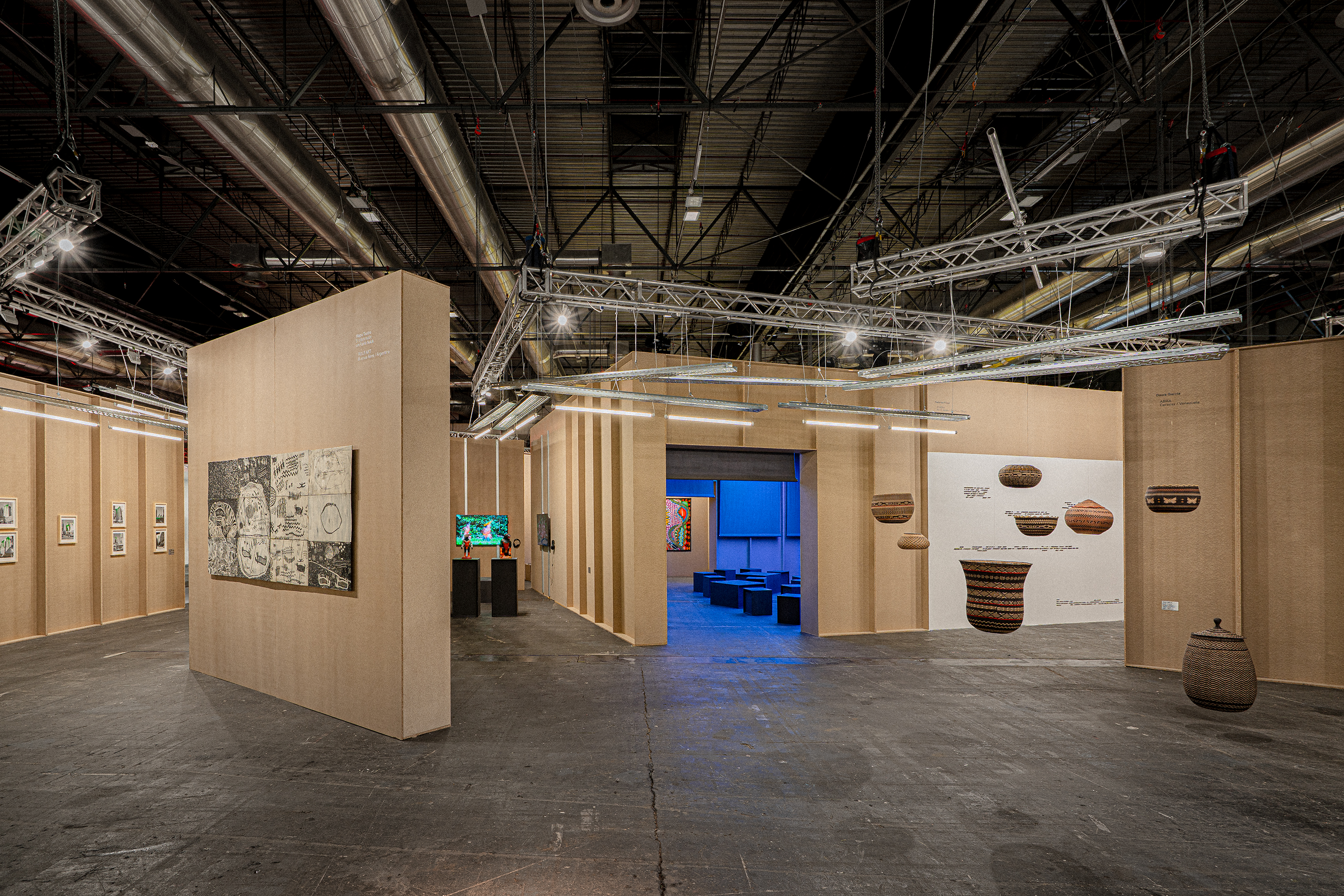
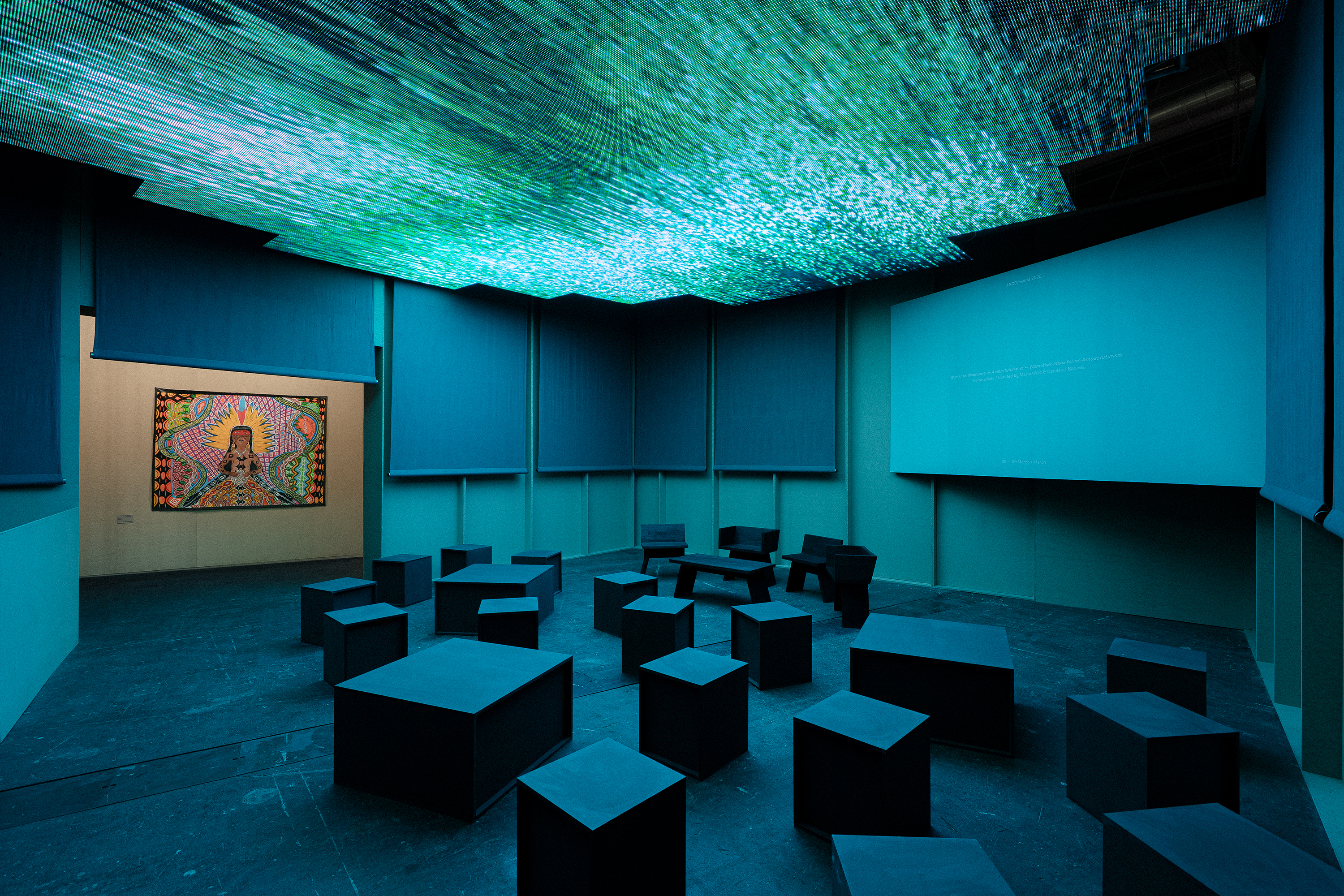
Asomashk: A Ceremony for the Mother Spirits of the Animals
The public program of Wametisé: Ideas for an Amazofuturism provided a space for exploring the intersections of ancestral cosmologies, contemporary Amazonian challenges, and visions of sustainable futures. Through roundtables, discussions, and talks, the forum brought together artists, thinkers, curators, and activists, fostering interdisciplinary dialogue around key issues such as colonialism, queer and feminist ecologies, and the intersections between art, culture, and representation. Hosted at the heart of the exhibition space, the forum served as a site for critical reflection, collective visioning, and action in response to contemporary ecological urgencies.
Accompanied by the visuals developed by Victor Clemente, the central space hosted the piece “Asomashk: A Ceremony for the Mother Spirits of the Animals” by the Shipibo Conibo Center, turning it into a place for contemplation but also as an intimate journey inside the fair.
Publication
The publication offered a multidimensional approach to the Amazonian territory through theory, fiction, visual art, and poetry. Conceived as an extension of the exhibition, it aimed to open portals into amazofuturist creation, expanding on the concepts explored in the show and proposing new modes of engagement.
It included texts by the curators outlining the project’s conceptual framework, a specially commissioned visual essay by artist Gustavo Caboco, and a selection of quotes and fragments from participating artists that captured the collective imaginary of amazofuturism. A theoretical essay by artist and researcher Bárbara Santos situated readers within Amazonian cosmogony, while a continuous “serpent text” by Uýra Sodoma threaded through the publication, contributing a poetic and political rhythm that underscored the core narrative of Wametisé.
In line with the project’s commitment to sustainability, the publication was produced using environmentally responsible materials and processes. The paper came from certified, responsibly managed sources, and the inks used were plant-based and free from toxic chemicals, reducing the ecological impact of its production.
Credits
- With works by
-
Dawa García, Carlos Jacanamijoy, Frederico Filippi, Uýra Sodoma, Movimiento de Artistas Huni Kuin (MAHKU), Naine Terena, Nereyda López, Anna Bella Geiger, Jonier Marín, Aycoobo - Wilson Rodríguez, Celia Vásquez Yui - Biri Jisbe, Mazenett & Quiroga, Olinda Silvano, Brus Rubio, Chonon Bensho, Duhigó, Dhiani Pa’saro, Paulo Desana, Gustavo Caboco, Daiara Tukano, Carlos Motta, Mapa Teatro, Claudia Andújar
- Design, Development
-
Gabriel Alonso, Karol Muñozcano, Yuri Tuma, Pablo Ferreira
- Architecture Production
-
Jomuro Architecture
- Publication Coordination
-
Catalina Imizcoz (Cthulhu Books)
- Publication Design
-
Matteo Guarnaccia, Alicia Sánchez
- Furniture Design
-
Esto Estudio
- Stage Visuals
-
Victor Clemente
- Photos
-
Maru Serrano
